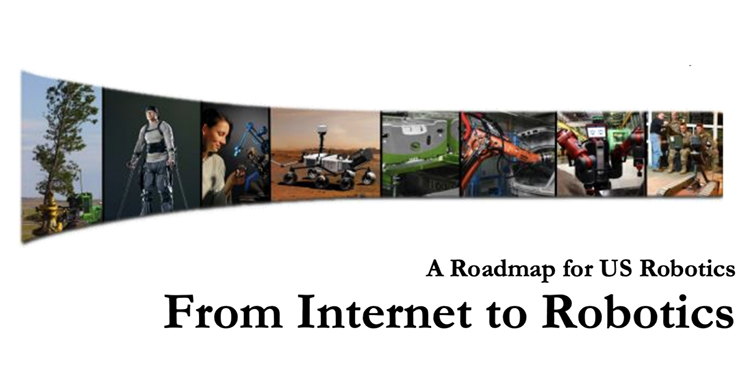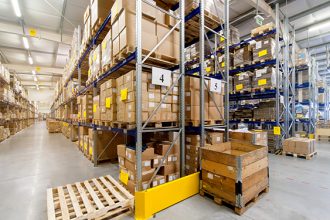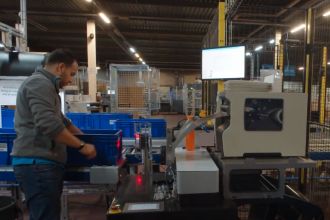Material Handling And Supply Chain Automation Discussed At U.S. Robotics Roadmap Workshop

MHI participated in a workshop of industry professionals and academia to provide content for the publication of an updated version of the U.S. National Robotics Roadmap, slated to be released in the summer of 2020. The Roadmap was first published in 2009 and was revised in 2013 and 2016.
The earlier versions of the Roadmap spoke little of how automation will be incorporated into the supply chain, yet today there are products and systems being developed that support the notion that the supply chain of the future will utilize a high degree of autonomy.
MHI staff member Patrick Davison participated in the workshop and gave a presentation about material handling automation at the start of the workshop and participated in a breakout session evaluating material handling and supply chain automation later that morning. The breakout session included representatives from industry, including a logistics carrier and an e-commerce supplier, as well as several college professors.
Noted were several economic, social, and technological drivers converging to enable a digital supply chain. Changes in retail and e-commerce are creating demand for nimble supply chains. Consumers are expecting short delivery times, while service providers are having trouble finding skilled and general labor to meet demand. Meanwhile, expanding computing technology and the emergence of a variety of autonomous equipment, including autonomous mobile robots, self-driving vehicles, and drone technology could lead to an autonomous supply chain future. The breakout group perceived several benefits to an increasingly autonomous supply chain, including faster delivery speeds, safety, cost savings, energy savings, and sustainability.
The group also identified several needs or obstacles that would need to be overcome, and not all of them pertain to technology. First and foremost is the legal and regulatory environment. An autonomous supply chain could have driverless vehicles on land, sea, and air, but the U.S. legal framework has yet to establish the liability schemes in the event damages occur. This brought forth a discussion about trust, or an assurance that parties engaged in autonomous supply chain activities will need an assurance that their contribution would not put them in a compromised situation. Privacy and cybersecurity issues would need to be addressed so that provide information is not distributed, and that systems are sufficiently robust to ward off cyberattacks.
Regarding technology, several devices will require new or expanded capabilities to support an autonomous supply chain. A supply chain is a network of goods providers, such as manufacturing facilities, and distribution and fulfillment centers, utilizing omni-channel logistics and distribution networks with a variety of different vehicles delivering goods to consumers, when and where those goods are needed. All these nodes require the transfer of products and information. Implementing autonomy into such a network will require vast computing capabilities and manipulation technologies that are not currently fully developed.
The group also agreed that regardless of the level of autonomy a digital supply chain will achieve in the future, there is unlikely to be a “no-jobs” or “no-people” supply chain anytime soon. Instead, participants surmised that there will be need for people to work in the future autonomous supply chain and agreed that the job titles and skills these workers will require to design, build, operate, and maintain the network will continue to evolve and expand.
The breakout group noted that distribution and fulfillment centers could serve an important role in helping to conceptualize a digital supply chain. Many concerns with movement, tracking, control, and protection of goods in the supply chain are replicated in a distribution center, much in a much smaller, controlled environment. As autonomous solutions continue to be developed and proven effective inside, we could then expect to see them used more in logistics.
The session ended with a discussion about ethics, and the challenges we will face as we proceed forth into a digitized and autonomously controlled world. Technology is moving faster than our support frameworks, which means several difficult questions remain unanswered. What if, through machine learning, a robot “learned” inappropriate behavior? As robots begin to sense and learn the environment, how will that data be used and disseminated? And who will be responsible for a robot’s action or inaction when instances occur? These questions and others will need to be decided as we continue forth into an autonomous, digital supply chain.
The updated version of the Roadmap is scheduled to be published in the summer of 2020.



